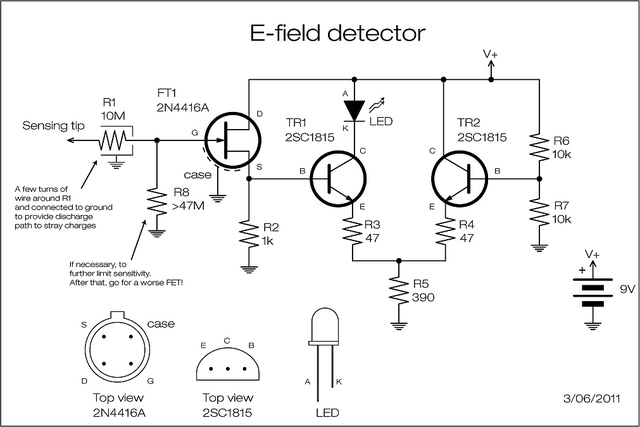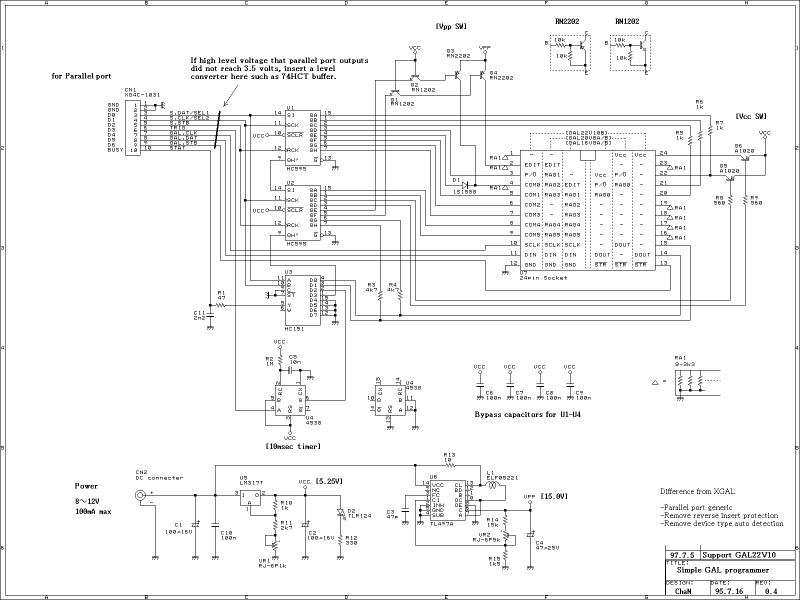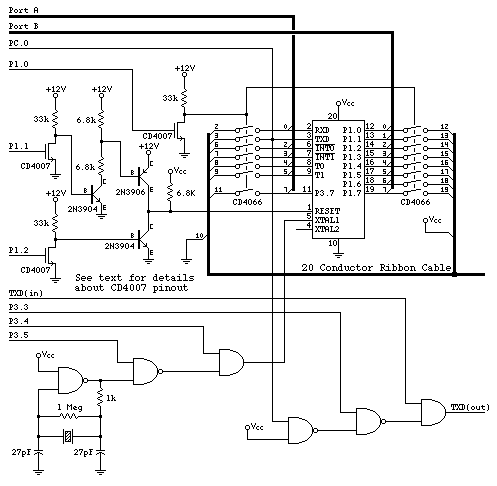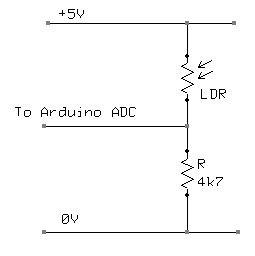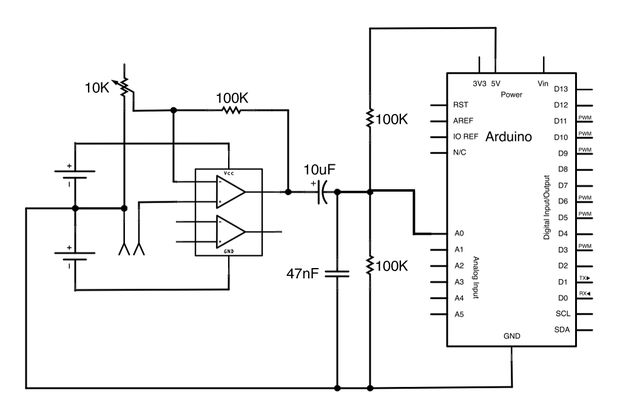
Arduino AVR High-Voltage Serial Programmer

This Arduino sketch is designed to recover ATtiny microcontrollers that have become non-functional due to incorrect fuse settings. It achieves this by placing the affected ATtiny into high-voltage serial programming mode and rewriting the fuses to safe values. The Arduino is connected to the ATtiny through 1k ohm resistors, and a 2N3904 transistor is utilized to apply 12 volts to the reset pin of the ATtiny. After the sketch is uploaded, the Arduino continuously prompts the user to "Enter a character to continue" until a byte is sent through the serial monitor, at which point the Arduino proceeds to program the fuses.
The circuit described involves several key components and connections necessary for successful operation. The ATtiny microcontroller, which is the target device for recovery, must be connected to the Arduino via a series of resistors. Specifically, 1k ohm resistors are employed to limit the current flowing into the ATtiny's input pins, ensuring that the microcontroller is not damaged during the programming process.
The 2N3904 transistor acts as a switch, controlling the application of 12 volts to the reset pin of the ATtiny. This high voltage is essential for entering the high-voltage programming mode, which is necessary for recovering microcontrollers that have been rendered inoperable by incorrect fuse settings. The transistor is connected in such a way that when the Arduino sends a signal to the base of the transistor, it allows the higher voltage to be applied to the reset pin.
The sketch initiates communication by repeatedly prompting the user to enter a character until the appropriate signal is received through the serial monitor. This step is crucial as it establishes a communication link between the Arduino and the ATtiny. Once communication is confirmed, the Arduino sends the necessary commands to reprogram the fuses, restoring the microcontroller to a functional state.
Overall, this recovery method provides a practical solution for users who encounter issues with ATtiny microcontrollers due to erroneous fuse configurations, enabling them to restore functionality without needing to replace the microcontroller. Proper attention to component values and connections is essential to ensure the success of the recovery process.This Arduino sketch is useful for rescuing ATtiny microcontrollers rendered useless by incorrect fuse settings. It does this by putting the bricked tiny into high-voltage serial programming mode and writingthe fuses to safe values.
The Arduino is connected to the tiny though 1k resistors and a 2N3904 transistor is used to switch 12 volts applied t o the tiny`s reset pin. After uploading the sketch the Arduino sends Enter a character to continue. repeatedly untilcommunications are established by sending a byte through the serial monitor. The Arduino then programs the fuses. 🔗 External reference
The circuit described involves several key components and connections necessary for successful operation. The ATtiny microcontroller, which is the target device for recovery, must be connected to the Arduino via a series of resistors. Specifically, 1k ohm resistors are employed to limit the current flowing into the ATtiny's input pins, ensuring that the microcontroller is not damaged during the programming process.
The 2N3904 transistor acts as a switch, controlling the application of 12 volts to the reset pin of the ATtiny. This high voltage is essential for entering the high-voltage programming mode, which is necessary for recovering microcontrollers that have been rendered inoperable by incorrect fuse settings. The transistor is connected in such a way that when the Arduino sends a signal to the base of the transistor, it allows the higher voltage to be applied to the reset pin.
The sketch initiates communication by repeatedly prompting the user to enter a character until the appropriate signal is received through the serial monitor. This step is crucial as it establishes a communication link between the Arduino and the ATtiny. Once communication is confirmed, the Arduino sends the necessary commands to reprogram the fuses, restoring the microcontroller to a functional state.
Overall, this recovery method provides a practical solution for users who encounter issues with ATtiny microcontrollers due to erroneous fuse configurations, enabling them to restore functionality without needing to replace the microcontroller. Proper attention to component values and connections is essential to ensure the success of the recovery process.This Arduino sketch is useful for rescuing ATtiny microcontrollers rendered useless by incorrect fuse settings. It does this by putting the bricked tiny into high-voltage serial programming mode and writingthe fuses to safe values.
The Arduino is connected to the tiny though 1k resistors and a 2N3904 transistor is used to switch 12 volts applied t o the tiny`s reset pin. After uploading the sketch the Arduino sends Enter a character to continue. repeatedly untilcommunications are established by sending a byte through the serial monitor. The Arduino then programs the fuses. 🔗 External reference
Warning: include(partials/cookie-banner.php): Failed to open stream: Permission denied in /var/www/html/nextgr/view-circuit.php on line 713
Warning: include(): Failed opening 'partials/cookie-banner.php' for inclusion (include_path='.:/usr/share/php') in /var/www/html/nextgr/view-circuit.php on line 713

